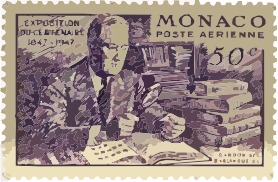Highlights
- Franklin D. Roosevelt
- John Lennon
- Ronnie Wood
Did you know that the USPS designates October as National Stamp Collecting Month? Every fall the postal service kicks off the month-long celebration of philately by unveiling a new collector stamp series for the youth market.
Stamp collecting was once the most popular hobby in the world, and is still enjoyed by many today. In the days before television and the Internet, collecting stamps inspired the imaginations of youths with little illustrations of life and adventure in far-off places.

FDR Philatelist
One such youth would grow up to be our 32nd president. Franklin D. Roosevelt started collecting stamps when he was 8 years old. By the time he went to college he had amassed an impressive collection, which made the trip to Harvard with him. Roosevelt would later find his hobby therapeutic when he contracted polio as an adult and became paralyzed from the waist down.
I owe my life to my hobbies, especially stamp collecting,
Roosevelt said.
Roosevelt never lost interest in his stamps, and as president he maintained an active role in postal affairs, even suggesting designs for new stamps. He is one of a few stamp collectors to have been honored by having his own image adorn the stamps of several nations.
FDR wasn’t the only person to find stamp collecting therapeutic. Rolling Stones guitarist Ronnie Wood began collecting stamps while in recovery from alcoholism. Wood found life dull without the sauce, and sought out something to keep his mind active when he wasn’t making music.
Other rockers who were known for philately are John Lennon and Freddie Mercury. Lennon collected stamps as a youth, and many of the stamps in his collection were modified by the future Beatle with the addition of moustaches or beards to faces. Mercury’s collection was sold at auction and is now in the hands of the Royal Mail’s National Postal Museum.